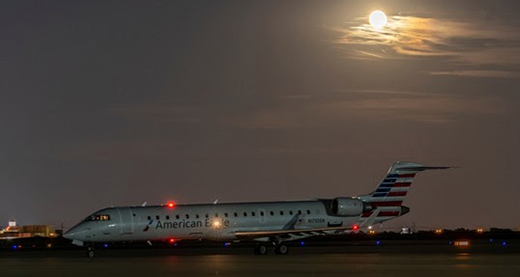A two-year effort has landed legislation into law to increase the number of direct flights between Oklahoma airports and premiere destination cities. Senate Bill 1461, by Sen. Paul Rosino, R-Oklahoma City, and Representative Jon Echols, R-Oklahoma City created the Oklahoma Air Service Development Grant Program (OASDGP), which will be administered by the Oklahoma Aeronautics Commission (OAC).
Senator Rosino along with OAC and the Department of Commerce have been propelling this initiative since the fall of 2019 when a group of aviation industry leaders met to explore a state partnership with commercial airports and communities to attract new direct routes, which would bolster economic development efforts for communities and the entire state. From there, several bills were introduced, and an interim study was held in the summer of 2020 before the final language agreed upon by numerous industry stakeholders was passed in SB 1461.
“This is a great program for Oklahoma. Many businesses won’t even consider relocating or expanding to a community without having a direct flight to the city where they’re headquartered. Having a statewide program providing grant funding to our commercial headquarters can give them an important edge when competing with other states for those critical direct routes,” Rosino said. “I’m grateful for the work of my House principal author, Majority Leader Jon Echols, the great support of our fellow members, and to Governor Kevin Stitt for signing this measure into law.”
“The establishment of the Oklahoma Air Service Development Grant Program will be a shot in the arm for economic development in our state,” Echols said. “Oklahoma is no longer a flyover state, we are a fly-to state, and programs like this will help attract more people to come and see what our beautiful state has to offer.”
Signifying a need for the legislation to help our commercial airports, in March of this year, United Airlines canceled two routes out of Will Rogers World Airport. The airlines announced they will no longer provide direct flights from Oklahoma City to Washington (Dulles) or Newark. Airport officials in the state reported that this is just one example of the larger challenge that communities with airports the size of Oklahoma City and Tulsa have when it comes to attracting and retaining commercial flights. Regional carriers that serve all of the legacy airlines are parking aircraft because they don’t have the crew to operate them. Routes served by regional carriers are struggling the most given that mainline carriers are bringing up pilots, flight attendants, and other crew faster than the regional airlines can replace them.
“As the commercial air service market is recovering from COVID-19 the competition for new direct routes is at an all-time high. An airline may have six to seven cities that are of similar size to choose from where they know the routes will likely be successful, but they can only pick two to three new routes to operate,” said State Director of Aeronautics Grayson Ardies. “Programs like the one the legislature has implemented this session will hopefully place Oklahoma’s commercial airports in the winner’s seat when those new direct flights are selected,” Ardies continued.
Under SB 1461, grant funding can be used for commercial air service development projects to support the introduction of new routes in the state. Eligible entities must demonstrate the ability to provide a minimum of 20 percent of project funds through local sources and submit an application and business plan to be considered. Due to certain Federal Aviation Administration restrictions and other requirements for interactions with airlines, grants must be offered to entities beyond the commercial airports themselves.



